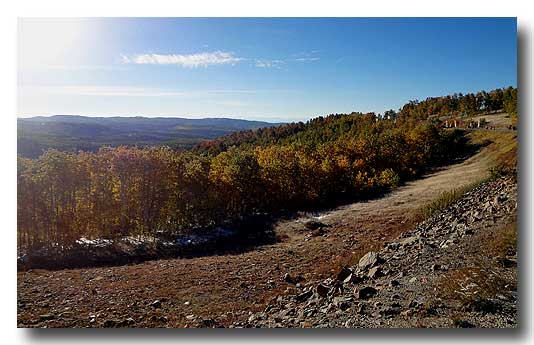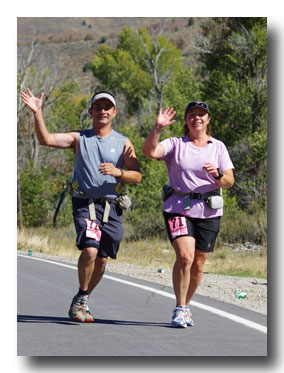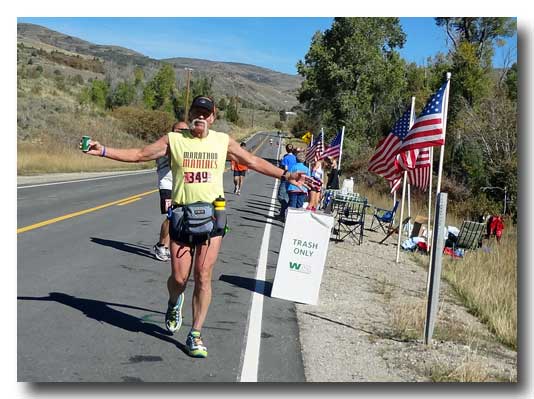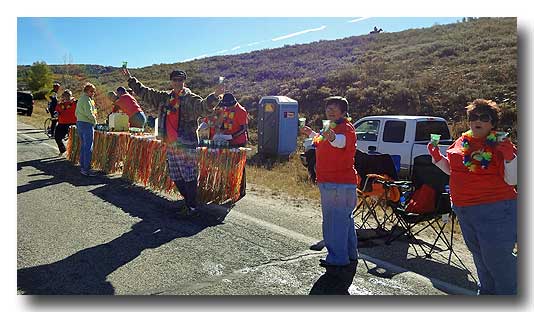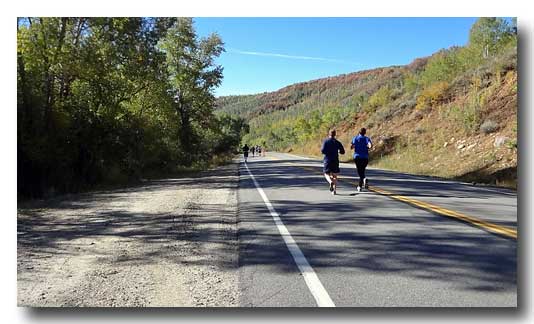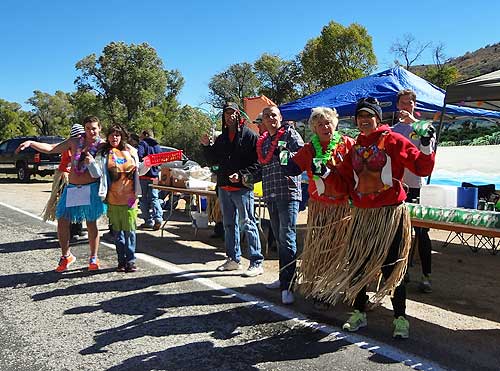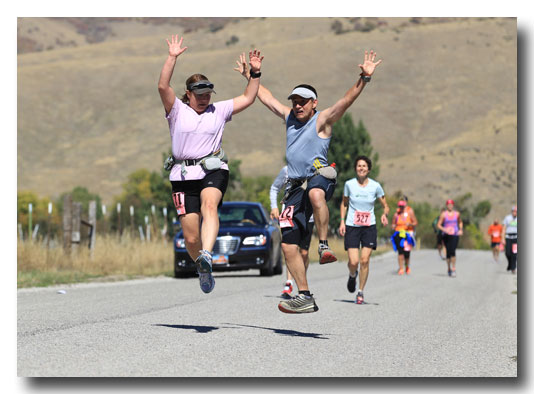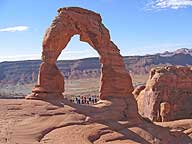 |
Adventures in Camping, Backpacking, Trail Running, and Canyoneering Huntsville Marathon 2013 |
> Home
|
Cut-Off Times | Race Description
An interesting article on the history and mystery of the name of the area, Monte Cristo, appeared in the Deseret News.
This is the general starting area of the race on State Route 39 at about mile marker 43. View Larger Map
It's the regulation distance of 26.2 miles (42.2 kilometers). Combined with a drop in elevation of around 3,500 feet over the entire course, runners will find this a speedy, but very manageable course that should lend to personal records for many runners.
There was no time limit, and runners finishing under 7 hours will be fully supported until the end. Those who anticipate finishing after 7 hours are not pulled from the race.
Although most of my race reports deal with trail events, I sometimes review my experiences on road races, especially when they have some personal significance. I started running in 2007, since that time, both my wife and I have done a number of races (at a very slow pace), but the Huntsville Marathon was to be only my second completely-paved street marathon. For me personally, my times have just gotten longer over the years, and this could be due to the type of event. For example, I've done two snowshoe marathons, but the terrain and conditions of such events are not designed to qualify you for Boston, and that has never been my goal. For me, I generally take lots of pictures, and I carry a tripod and camera to get scenic shots and video of myself running along mountain trails. My race reports are also geared more to the back-of-the-pack runners.
When the inaugural Huntsville Marathon was approaching in 2012, we both signed up for scenic downhill course. One of the first things that struck me was the moniker for the race: "The Full Monte" . . . . Right . . . It sounded like an event based on the British comedy film, The Full Monty. There are other possible origins of the phrase, but the word and the thought of running naked down the mountain made for entertaining conversation.
Unfortunately, two days before the 2012 race, Shirley got sick, so we weren't able to participate in the event, so when 2013 rolled around, we signed up, and Shirley focused her year of training on completing this event. Now, in such races, you often have several camps of thought: the competitors for prizes and the competitors against themselves who just want to cross the finish line. Fortunately, such races can accommodate all types. We have never been a part of the first group, but we have simply been finishers, and coming in last in a trail marathon qualifies us for such distinction. Personally, I think that there is a greater story in those who slog the miles, at times like zombies, and cross the finish line. In the months leading up to the race, Shirley trained consistently for the event, and rather than simply doing long runs up to 20 miles or so, she completed longer runs of 18, 20, and 26+ miles. Although such distance isn't always needed, she wanted to go into the race with the knowledge that she could actual do the miles, and this would be psychological advantage for her. Like many others, Shirley uses walk breaks and finds the Galloway RUN-WALK-RUN method useful for her.
To keep travel to the event as easy as possible, I found a place to stay in the local area so we could get to the loading area easily on race morning. We also have a nice dinner at a restaurant in nearby Eden. In the morning, we got up around 5:15 a.m., had a light breakfast, and got one one of the buses at about 6:30. It was a cool morning, but we both were feeling excited and relieved that we didn't have to deal with the windy and snowy conditions that had been seen the day before at the top of the course. We arrived at the top over an hour before the race, and there was a large tent set up with heaters in case you wanted to escape the cold. Shirley and I stayed outside, enjoyed the sunrise, and counted down the minutes. As we gathered near the starting line a few minutes before 9:00 a.m., we ran into John Bozung, who has made a name for himself as the organizer of a number of popular trail races including the Squaw Peak 50, and the finisher of 348 marathons or ultramarathons, and I've personally done . . . uh, finished . . . uh, dragged my body to the end . . . of all his events. Fortunately, today would be downhill verses the Kat'cina Mosa 100K that has about 17,000 feet total gain in elevation over 62 miles.
With no bang of a gun or an announcement that we could hear near the back of the pack, the only way we knew the race started was the slow flow of people toward the starting line. The first half of the marathon was full of nice views, with great aid stations almost every two miles. We only had praise for the volunteers who enthusiastically offered all kinds of goodies including gels, fruit, drink, and other items. The aid stations were competing for the best aid station award, and none of them let us down. Great service all around.
When we run together on such races, I tend to run ahead, take pictures and video of the sights, and fill my wife's water bottle. One runner ask my wife if I always ran round like that and how fast I could actually run the race. Frankly, I have no idea.
Our pace slowed a little over the next few miles, and I occasionally would hoop and holler to liven things up. Shirley was startled the first time, but she figured out that I was trying to infuse some levity in the day. We continued on until, lo and behold, a dancing man in a hula shirt and coconut bra appeared in the middle of the road at aid station 8 at mile18 . You couldn't help but smile and chuckle, helping you forget about the pain and discomfort you were feeling at that moment. Accompanying him were others wearing humorous attire, and we felt passing through that aid station came at the right time.
We left the canyon about mile 19.5 where the course flattens for the rest of the race. The next couple of miles were a mix of fast walking and jogging. Sometimes we talked about random things; a lot of the time she listened to podcasts of Science Friday, and I listened to some music. Then, at about mile 23, I spotted the event photographers again, and I started jumping up and down trying to get Shirley to do the same. I thought, "Hey, why not look energetic at this point when the last thing you want to do is . . . well . . . jump?"
The last couple of miles had some pleasant music and entertainers to keep things lively, and in the homestretch, we ran together across the finish line at 4:35, which was a PR for her by more than 50 minutes. The post-race support was great, including small bags of ice for anyone who needed it. We were both satisfied with the experience. The weather was nice, the scenery was great, and the race organization couldn't have been better. What I Use When Running:
Food: Gu Energy Gel (Mint Chocolate), oranges, grapes, and Goldfish Crackers
|
| Other Sites |
